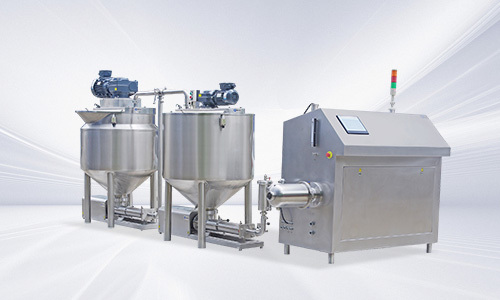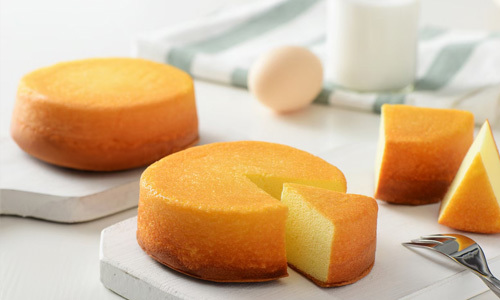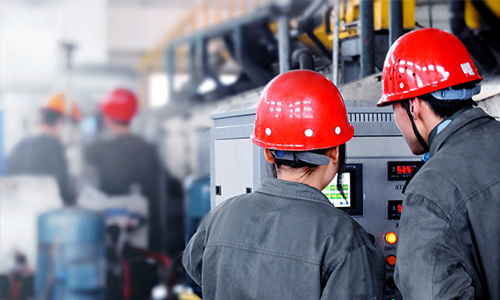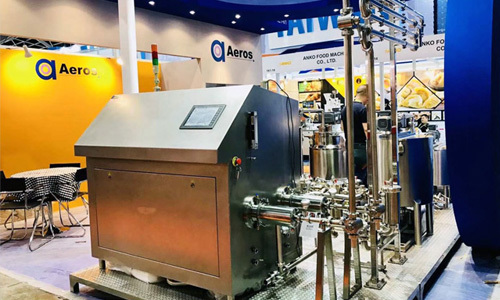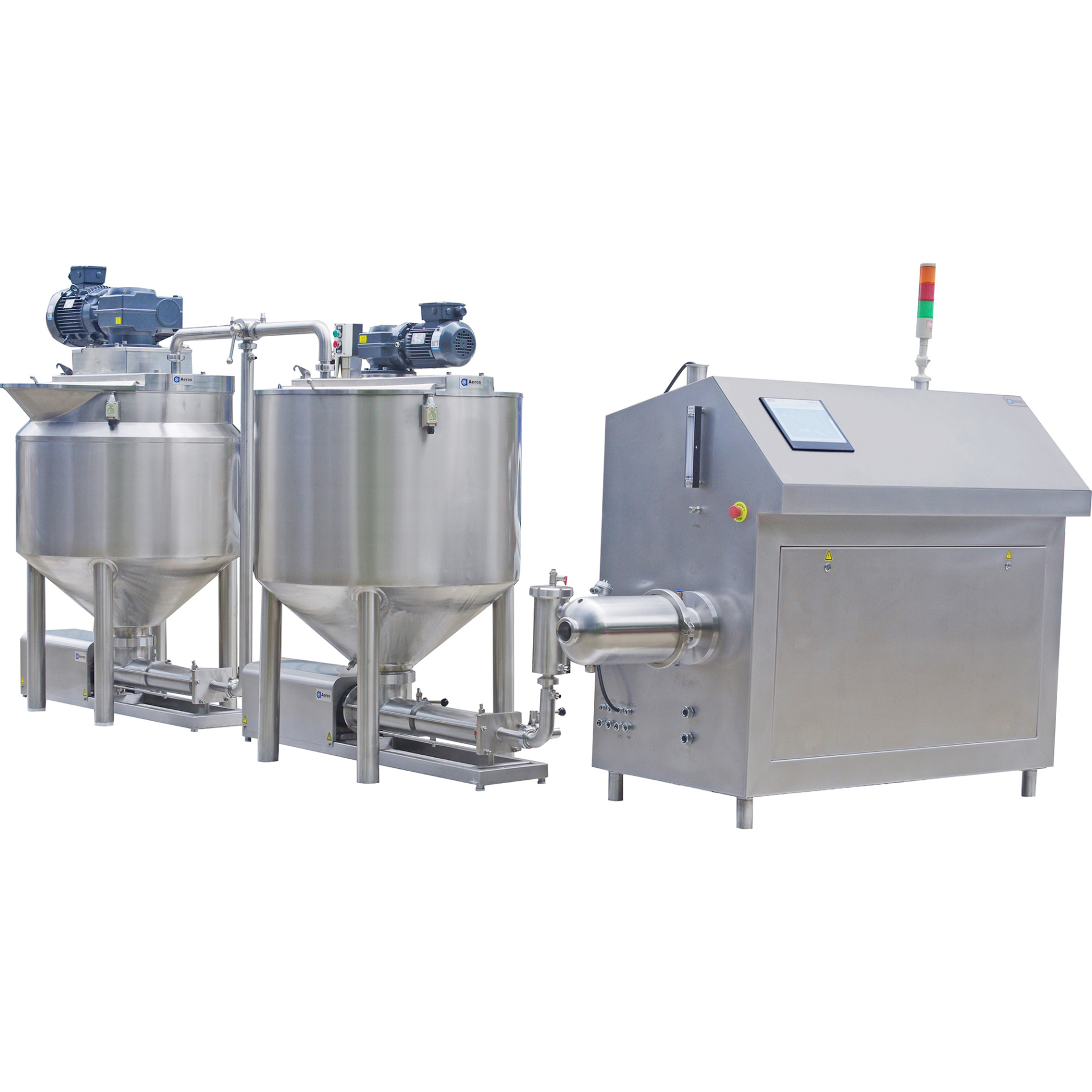Unlocking the Secrets of Efficient Marshmallow Extrusion: A Comprehensive Guide

2025/06/24
Unlocking the Secrets of Efficient Marshmallow Extrusion
Table of Contents
- Introduction to Marshmallow Extrusion
- Understanding Marshmallow Formulation
- The Importance of Extrusion in Marshmallow Production
- Key Components of Extrusion Machinery
- Efficient Extrusion Techniques for Optimal Results
- Common Challenges in Marshmallow Extrusion
- Quality Control and Assurance in Marshmallow Production
- Future Trends in Marshmallow Extrusion Technology
- Conclusion
- FAQs
Introduction to Marshmallow Extrusion
Marshmallow extrusion has become a cornerstone in the confectionery industry, allowing manufacturers to produce these fluffy delicacies with unmatched efficiency. This process involves the continuous shaping of a marshmallow mixture—composed primarily of sugar, water, and gelatin—into a variety of forms. Understanding how to optimize the extrusion process is crucial for anyone involved in food machinery manufacturing or candy production.
In this guide, we will delve into the secrets of efficient marshmallow extrusion, covering everything from formulation basics to cutting-edge technologies that enhance production capabilities.
Understanding Marshmallow Formulation
The foundation of successful marshmallow extrusion lies in a well-balanced formulation. The core ingredients typically include:
- **Sugar**: Acts as the primary sweetener and structure builder.
- **Water**: Necessary for dissolving sugar and activating gelatin.
- **Gelatin**: Provides the characteristic texture and stability of marshmallows.
- **Flavorings and Colors**: Enhance the sensory appeal of the final product.
To achieve optimal extrusion results, it is essential to experiment with the ratios of these ingredients. For instance, a higher gelatin concentration can lead to firmer marshmallows, while varying the sugar content can affect the extrusion viscosity.
The Importance of Extrusion in Marshmallow Production
Extrusion plays a pivotal role in marshmallow production because it allows for:
- **High Efficiency**: Continuous processing reduces production times and labor costs.
- **Consistency**: Automated extrusion machines ensure uniform product dimensions and textures.
- **Versatility**: Extrusion allows for the creation of various shapes and sizes, catering to diverse market demands.
By mastering the extrusion process, manufacturers can significantly improve their output while maintaining high-quality standards.
Key Components of Extrusion Machinery
Modern marshmallow extrusion machines consist of several vital components designed to work harmoniously:
1. Feed Hopper
The feed hopper is where the marshmallow mixture is initially loaded. It must be designed to maintain consistent material flow, preventing blockages or inconsistencies.
2. Extruder Screw
The extruder screw plays a crucial role in transporting and mixing the marshmallow ingredients. The geometry of the screw affects mixing efficiency and the rate at which materials are conveyed.
3. Barrel
The barrel is where the actual extrusion occurs. Its heating capabilities are essential for achieving the right temperature and viscosity of the marshmallow mixture.
4. Die Plate
The die plate defines the shape of the extruded marshmallow. Various die designs can produce different shapes, from classic marshmallow puffs to innovative designs for confectionery applications.
5. Cooling System
Post-extrusion, marshmallows need to cool and set properly. An effective cooling system ensures rapid temperature reduction, which is critical for maintaining product structure.
Efficient Extrusion Techniques for Optimal Results
To maximize the efficiency and output of marshmallow extrusion, consider implementing the following techniques:
1. Optimize Ingredient Ratios
Testing various ingredient ratios can lead to a more workable mixture that flows better through the extruder, improving consistency and reducing downtime.
2. Maintain Proper Temperature Control
Temperature is crucial in the extrusion process. Maintaining the right temperature ensures proper mixing and prevents the mixture from becoming too thick or too runny.
3. Regular Maintenance of Equipment
Regular inspections and maintenance of extrusion machinery are vital to prevent mechanical failures and ensure optimal performance. This includes checking the integrity of the screw, barrel, and cooling systems.
4. Implement Automation
Investing in automation technology can greatly enhance production efficiency. Automated systems allow for precise measurements and consistent ingredient mixing, minimizing human error.
5. Monitor Production Parameters
Utilize sensors and control systems to monitor essential production parameters, such as temperatures and pressures, in real-time. This data can help identify trends and areas for improvement.
Common Challenges in Marshmallow Extrusion
Even with the best practices in place, manufacturers may encounter challenges during the extrusion process. Some common issues include:
1. Inconsistent Product Quality
Variations in ingredient quality or environmental factors can lead to inconsistent marshmallow texture and flavor. Regular quality checks and supplier audits can help mitigate this issue.
2. Equipment Downtime
Unexpected equipment failures can halt production. Implementing a proactive maintenance schedule and keeping spare parts on hand can minimize downtime.
3. Difficulty in Shaping
If the marshmallow mixture is too thick, it may become challenging to shape properly. Adjusting the formulation or optimizing the extrusion parameters can help alleviate this issue.
4. Overheating
Excessive heat can lead to degradation of key ingredients, affecting the final product's quality. Careful temperature monitoring and control are essential to prevent this.
Quality Control and Assurance in Marshmallow Production
Quality control is paramount in marshmallow production. This process ensures that each batch meets the desired specifications for texture, flavor, and appearance. Implementing the following measures can enhance quality assurance:
1. Routine Testing
Employ routine testing for key attributes such as moisture content, texture, and flavor profile. Regular sensory evaluations can help ensure product consistency.
2. Supplier Evaluation
Regularly assess suppliers to ensure they meet quality standards for raw materials. This helps maintain high product quality from the outset.
3. Employee Training
Invest in training programs for employees to ensure they understand quality control processes and can identify any issues before products reach the market.
Future Trends in Marshmallow Extrusion Technology
As technology advances, the marshmallow industry is seeing several trends that promise to enhance efficiency and product quality:
1. Smart Manufacturing
The incorporation of IoT and AI into manufacturing processes allows for real-time data analysis and predictive maintenance. This leads to optimized production schedules and reduced waste.
2. Sustainable Ingredients
With growing consumer demand for sustainability, manufacturers are exploring plant-based alternatives to traditional marshmallow ingredients. This trend can open new market opportunities.
3. Customization and Personalization
Consumers increasingly seek personalized products. Advances in extrusion technology allow for customizable shapes and flavors to cater to individual preferences.
Conclusion
In summary, mastering the intricacies of marshmallow extrusion is essential for manufacturers aiming to thrive in the competitive confectionery market. By understanding the formulation, utilizing efficient machinery, and implementing best practices, producers can unlock the full potential of their marshmallow production. As we look to the future, embracing technology and sustainable practices will position manufacturers for continued success and consumer satisfaction.
FAQs
1. What is marshmallow extrusion?
Marshmallow extrusion is the process of shaping a marshmallow mixture into its final form using specialized machinery that combines heating and pressure.
2. What are the key ingredients in marshmallow production?
The primary ingredients in marshmallow production include sugar, water, gelatin, flavorings, and colors.
3. How can I improve the efficiency of my marshmallow extrusion process?
Improving efficiency can be achieved by optimizing ingredient ratios, maintaining temperature control, regular equipment maintenance, and implementing automation.
4. What challenges might I face during marshmallow extrusion?
Common challenges include inconsistent product quality, equipment downtime, difficulty in shaping, and overheating of ingredients.
5. What trends are shaping the future of marshmallow extrusion technology?
Future trends include smart manufacturing, the use of sustainable ingredients, and an emphasis on customization and personalization in products.
Marshmallow extruder
Previous Page


